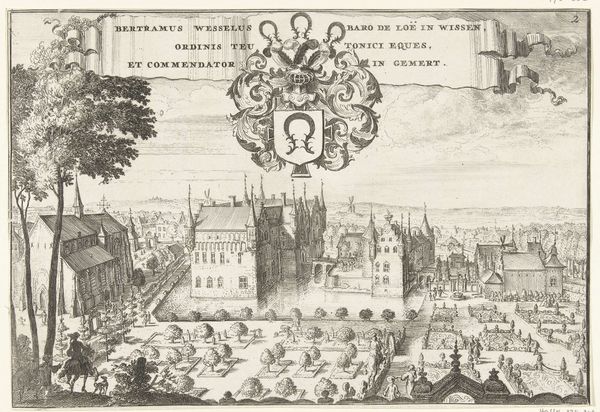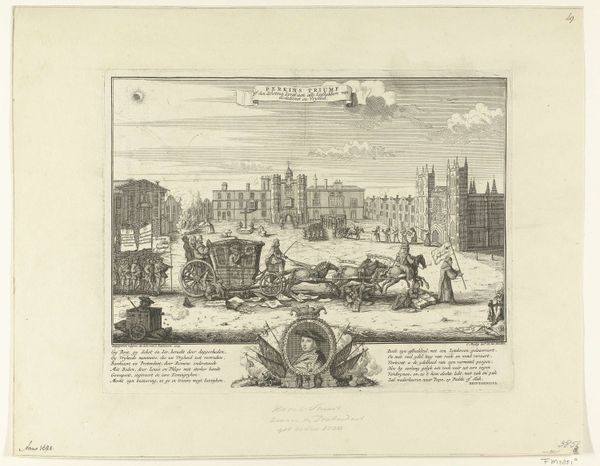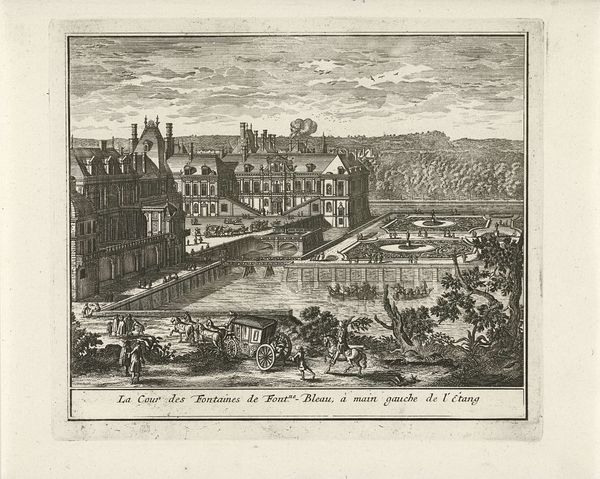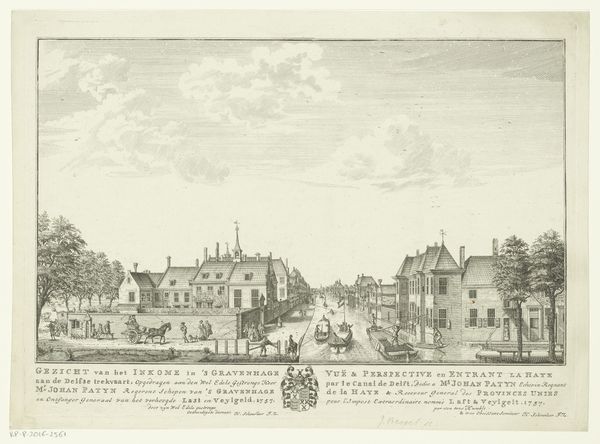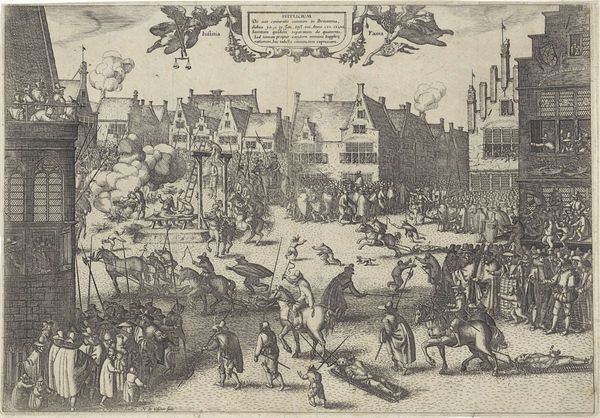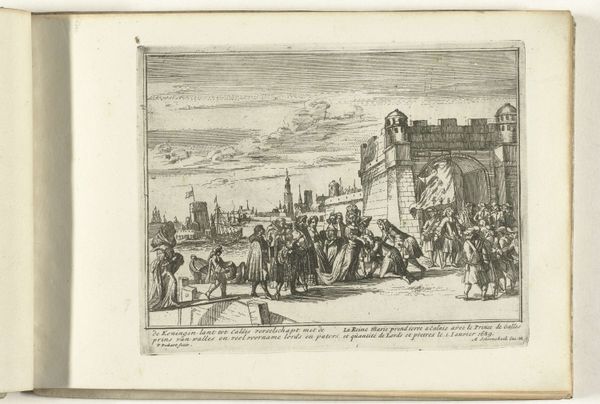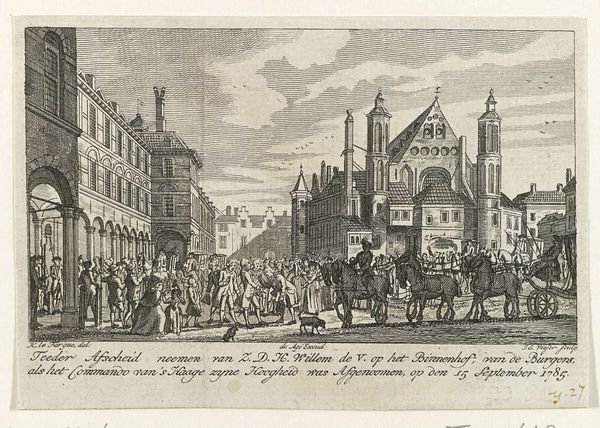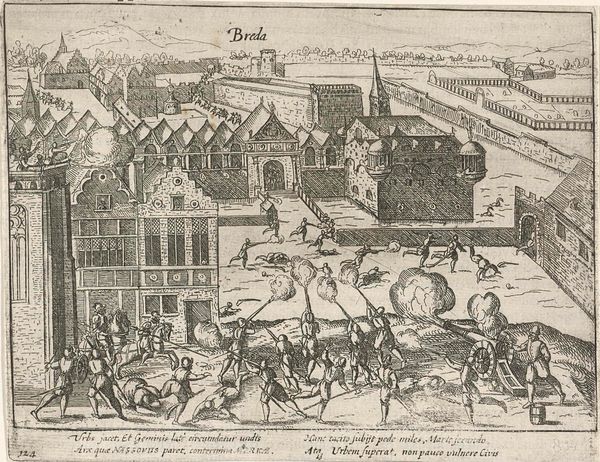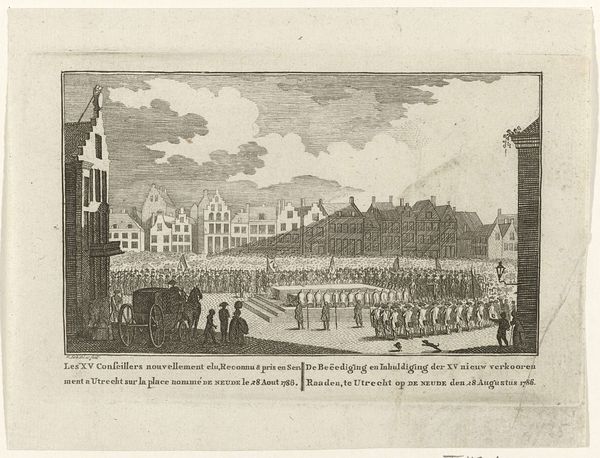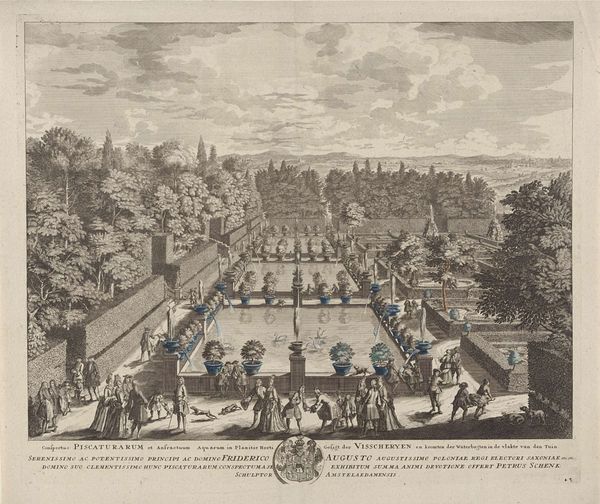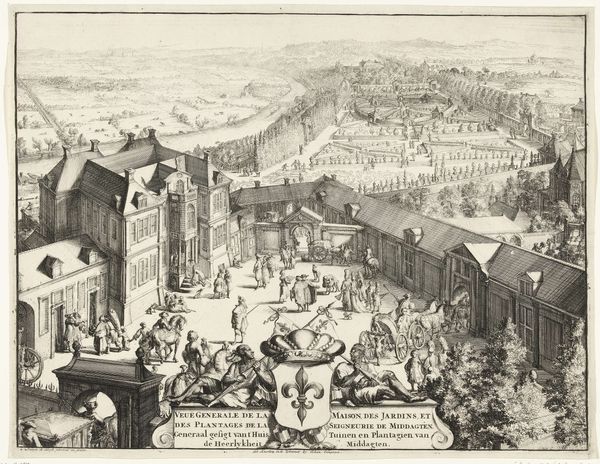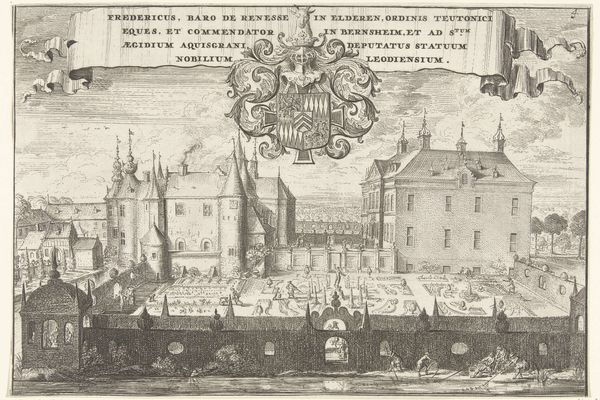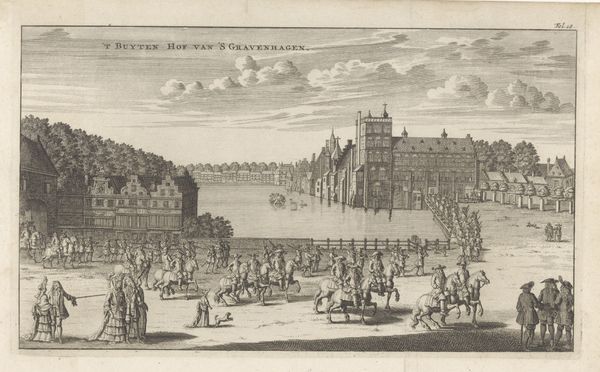
print, engraving
#
portrait
#
baroque
# print
#
old engraving style
#
cityscape
#
history-painting
#
engraving
Dimensions: height 240 mm, width 360 mm
Copyright: Rijks Museum: Open Domain
Editor: This is "Spotprent op de Engelse pretendent Charles Edward Stuart," or "Print on the English Pretender Charles Edward Stuart," created by an anonymous artist between 1745 and 1746. It’s an engraving that depicts a scene full of chaos. It's intriguing, but also hard to immediately decipher what is going on. What do you see in this piece that might illuminate its purpose? Curator: This print is fascinating as a piece of propaganda, reflecting the turbulent political climate of the time. Notice how the scene is designed to depict Charles Edward Stuart's, the Jacobite claimant, supposed triumph. Editor: I see that the title even uses the word triumph, but visually the imagery is far from celebratory! Curator: Exactly. The key here is understanding the political narrative. Think about who commissioned or disseminated this print. It seems to portray the chaos and disarray expected to follow Charles' claim to the throne. What institutions and power structures would have benefited from distributing such an image? Editor: Presumably, the current government in power, trying to undermine Stuart's image with the public. It also brings into question the public role of the artist or printmaker. Curator: Precisely! The cityscape in the background, with potentially recognizable buildings, places the political argument directly in the everyday world of its viewers. The artist has staged a political argument that touches institutions, public roles and current political figures. It prompts reflection on power dynamics during this specific historical period. Editor: That makes the scene a lot clearer. I didn't realize at first how meticulously constructed the apparent disarray truly is. Curator: Often, in studying prints like these, uncovering the power structures behind the images illuminates their social and historical importance. Editor: That's definitely given me a new perspective on how prints operated as political tools back then and how powerful these types of art can be.
Comments
No comments
Be the first to comment and join the conversation on the ultimate creative platform.
